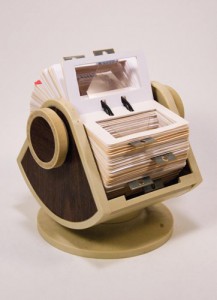When I was eleven years old, the first thing that impressed me about Steven and Billy Blaise Dufala was their brothers—John, Chris, and Dan. John, the eldest, was the first person I saw ride a BMX bike on a vert ramp. And he was good. Chris, the next oldest, was a solid street skateboarder well before the practice was considered mainstream or even “extreme”; he was also the earliest Dufala artist I can recall, meticulously rendering every heavy metal graphic known to South Jersey—Metallica skulls, Danzig skulls, Misfits skulls—all over the walls of the Dufala family compound. Dan, who falls between Steven and Billy, was the first kid I knew to have his picture in the paper, taking second place in a Lego building competition at FAO Schwartz in New York. Surrounded by such superstars of South Jersey, my youthful self deemed Steven and Billy’s greatest achievement to be their kinship to these three other guys, seemingly the true creative talents of the Dufala family.
While I still admire these “other brothers” more than 20 years later, I’ve since reconsidered my hasty assessment of Steven and Billy. Although no strangers to bikes or boards, they both began to paint, draw, build, and break things with their own brand of creative destruction. They started small, content to draw watches on their wrists in permanent marker and play with road kill—normal kid stuff.
But since 2004, Steven and Billy Blaise Dufala have orchestrated massive toilet-tricycle races, brought justice and bewilderment to the streets of Philadelphia in their mobile cardboard tank, launched a paper airplane attack from atop a building, created countless trinkets and tools of little or no use, unzipped the racier sides of their brains for all to see with their take-away “Free Walls,” and turned your childhood ice cream truck into a weapon of mass destruction. War, wealth, waste, sex, consumption, the environment—these topics both rise up and fall down in their work, inflated and defused by the brothers’ sometimes-dark, comedic edge.
Just in the past year and a half the Dufala Brothers have won the West Prize, joined the teaching faculty of the Pennsylvania Academy of the Fine Arts, appeared on Art In America’s “Top Ten” list for the 2010 Armory Show in New York City, were part of a team that received a Creative Industry Workforce Grant to start a residency program at an industrial recycling center, received a Village Voice Obie Award for set design, and most recently have had work acquired by the Philadelphia Museum of Art. But they remain true to themselves, unspoiled by all the acclaim—and I find myself impressed once again, this time by just how steadily they navigate all the attention they have garnered.
Thus, let me assure you: as someone who knew Steven and Billy Blaise Dufala when they were still blowing up G.I. Joes (well, they still sort of do that), I can affirm that they have not changed—at least not in any way for the worse. Beyond the increasingly amazing accolades and increasingly absurd creations, the Dufala Brothers are still fascinated with the humble yet hugely important artifacts of daily life, translating and transmitting through their objects the simple joys and hidden dangers inherent therein. Hailing from a eclectic collection of talented individuals brought together by way of DNA, they continue to work as hard as I remember: their sense of humor has remained, and their creative output (as well as that of their brothers John, Chris, and Dan) is as high as ever.
Matthew Seamus Callinan
Campus Exhibitions Coordinator
Haverford College

